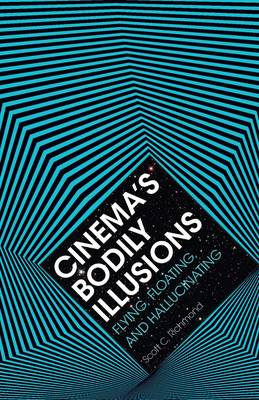4%OFF

Stock image for illustration purposes only - book cover, edition or condition may vary.
Cinema´s Bodily Illusions: Flying, Floating, and Hallucinating
Scott C. Richmond
€ 30.99
€ 29.74
FREE Delivery in Ireland
Description for Cinema´s Bodily Illusions: Flying, Floating, and Hallucinating
Paperback. Num Pages: 264 pages. BIC Classification: APFA; APFN. Category: (UP) Postgraduate, Research & Scholarly; (UU) Undergraduate. Dimension: 191 x 217 x 18. Weight in Grams: 292.
Do contemporary big-budget blockbuster films like Gravity move something in us that is fundamentally the same as what avant-garde and experimental films have done for more than a century? In a powerful challenge to mainstream film theory, Cinema's Bodily Illusions demonstrates that this is the case. Scott C. Richmond bridges genres and periods by focusing, most palpably, on cinema's power to evoke illusions: feeling like you're flying through space, experiencing 3D without glasses, or even hallucinating. He argues that cinema is, first and foremost, a technology to modulate perception. He presents a theory of cinema as a proprioceptive technology: cinema becomes art by modulating viewers' embodied sense of space. It works primarily not at the level of the intellect but at the level of the body. Richmond develops his theory through examples of direct perceptual illusion in cinema: hallucinatory flicker phenomena in Tony Conrad's The Flicker, eerie depth effects in Marcel Duchamp's Anemic Cinema, the illusion of bodily movement through onscreen space in Stanley Kubrick's 2001, Godfrey Reggio's Koyaanisqatsi, and Alfonso Cuaru3n's Gravity. In doing so he combines insights from Maurice Merleau-Ponty's phenomenology of perception and James J. Gibson's ecological approach to perception. The result is his distinctive ecological phenomenology, which allows us to refocus on the cinema's perceptual, rather than representational, power.Arguing against modernist habits of mind in film theory and aesthetics, and the attendant proclamations of cinema's death or irrelevance, Richmond demonstrates that cinema's proprioceptive aesthetics make it an urgent site of contemporary inquiry.
Product Details
Publisher
University of Minnesota Press
Format
Paperback
Publication date
2016
Condition
New
Weight
292g
Number of Pages
264
Place of Publication
Minnesota, United States
ISBN
9780816690992
SKU
V9780816690992
Shipping Time
Usually ships in 4 to 8 working days
Ref
99-2
About Scott C. Richmond
Scott C. Richmond is assistant professor of cinema and digital media in the Cinema Studies Institute at the University of Toronto.
Reviews for Cinema´s Bodily Illusions: Flying, Floating, and Hallucinating
Richmond's theory and method offers an important tool for doing some of the critical work that spectator theory cannot. Cinema's Bodily Illusions may become an influential vein within postmodern phenomenology. It offers a critical method for understanding the aesthetic moment outside of representational blinders. -PopMatters In laying out his theory of proprioceptive aesthetics in cinema, Cinema's Bodily Illusions makes a boldly provocative contribution to the study of bodies, film screens, and media technology. Rescuing cinematic illusion from the perjorative sense with which modernist film scholarship disparages it, Scott C. Richmond finds a visceral (rather than cerebral) thematization of the resonance between ordinary perception and cinematic perception. -Jennifer M. Barker, author of The Tactile Eye: Touch and the Cinematic Experience
